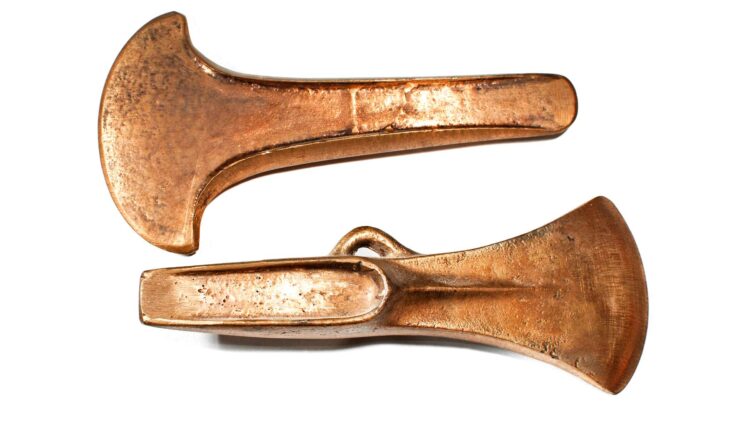Archaeology is a very respected field of work, and for many it takes years to find old objects buried in soil in one of the established dig sites. But sometimes, there are some fortuitous discoveries to be made, which turn out to be archaeological treasures that wither shift our understanding of the time period or add to the National Patrimony in a meaningful way. While we all like to think that these discoveries are made by seasoned pros, more often than not these are accidental, and the last historical marvel to be found was courtesy of a 13 year old girl, who thanks to a metal detector, was able to find a Bronze Age axe.
While any archaeological find of historical significance is always welcome, this particular find is quite the achievement. The Bronze Age happened between 3300 BCE and 1200 BCE, and it is named after the metal that was discovered during that period. Before the Bronze Age, the mixing of metals had not been common , and when archaeologists began to study this particular period in history they realized that the people living in it had managed to find a pretty good recipe for bronze, one part tin with nine parts copper.
The Bronze Age discovery, a new historical landmark moment
We all tend to think about archaeological sites as being select places on earth were you have to dig quite deep to find any kind of treasure. After all, centuries of rain, growth, trees, mudslides and just general living tend to bury objects. There are some areas where this clearly does not happen and with a simple metal detector you can find plenty of treasure.
Granted, the technology has advanced a lot since metal detectors were first invented and the more modern ones can really be finetuned into a very specialized piece of machinery, but the one that features in our story was not a very expensive, well calibrated tool operated by a specialist, it was run of the mill equipment operated by a teenager and her father on a field trip, hardly the professional environment we all assume.
When the protagonist of our story, Milly, found the piece that would later be revealed to be an axe, she just thought she had found an old piece of farming equipment. For those unfamiliar, axes and hammers usually have a metal head attached to a piece of wood. The heads tend to last longer than the wood and sometimes a broken tool gets put aside to “fix it later” and never gets recouped, leading to many of these findings in more rural areas.
While they did not think that this discovery was anything to write home about, the father daughter duo did choose to report their findings to the local coroner, just in case, and that is what brought the circus to town, albeit a bit later than anticipated. By the time experts had identified the finding and declared it important, they had found another 20 Bronze Age tools, most of which were axes.
The treasure trove did not stop there, when the professionals entered the scene and began to work they ended up finding another forty five tools, making this a very prolific dig. And also a valuable one, the tools were dated to approximately 1300 BCE.
Since the findings happened in private land, ownership of these pieces is a bit dicey. The landowner has rights to them, Milly and her dad have rights to them, and they are National Patrimony just by virtue of existing, to which Milly cleverly told the BBC that if the British Museum did want to purchase the artefacts, she would split the benefits with the landowner.

